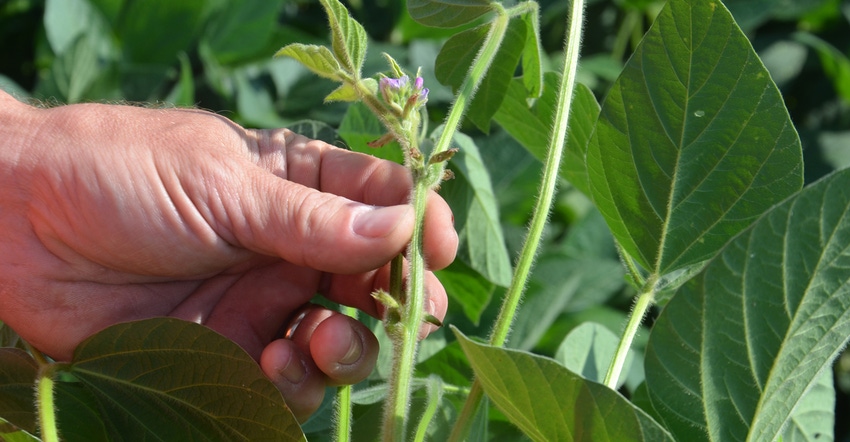
The more you understand about how soybeans grow and develop, the better your chances of making decisions that will set up your soybean fields for top yields. That’s why Steve Gauck believes identifying growth stages of soybeans is so important.
Gauck is a regional agronomy manager for Beck’s based near Greensburg, Ind. Beck’s sponsors Soybean Watch ’20. This project follows a soybean field in central Indiana throughout the season, making observations and emphasizing key points that also should apply to your fields.
“Knowing growth stages is critical,” Gauck says. “It’s a big help when it comes to making management decisions during the season.
“Some herbicide labels talk about growth stages. Perhaps you can’t apply after a certain growth stage. It’s also important when it comes to applying soybean fungicides. Our data indicates that it really pays to zero in on that R3 growth stage to apply a fungicide for maximum benefit.”
More growers are seeing returns to fungicides on soybeans, he notes. Even in a year with low crop prices and tight budgets, if your goal is turning a profit by maximizing yields, consider fungicides for soybeans, he says.
If you haven’t applied them before, perhaps you at least want to apply strips of fungicides within some fields. Make sure you use yield monitoring and mapping capabilities to follow up after harvest to determine if these strips yielded enough extra to more than pay for the cost of the fungicide and application.
Soybean growth stages
Find good examples of growth stages for soybeans in the Purdue University Corn & Soybean Field Guide, Gauck says. Here’s a brief description taken from the guide:
VE. This is the first vegetative stage. The cotyledons, which are the original halves of the soybean seed, and the growing point are above ground.
VC. The unifoliate leaves are fully expanded, with the smaller cotyledons, one on each side, underneath them.
V2. The margins of the leaflets on the second trifoliate no longer touch each other.
V6. The margins of the leaflets on the sixth trifoliate no longer touch each other. Nitrogen-fixing bacteria should have kicked in, producing dark green plants under normal conditions.
R1. The first reproductive phase is the point at which there’s an open flower on any node of the main stem.
R2. Also known as full bloom, there should be an open flower on one of the two uppermost nodes on the main stem, with a completely unrolled or flat leaf at that node.
R3. There is a pod at least a quarter inch long on one of the four uppermost nodes on the main stem. Again, there should be a flat leaf on that node.
R4. There is a pod at least three-quarters inch long at one of the four top nodes.
R5. This is beginning seed stage, with seed at least one-eighth inch long in a pod on the four uppermost nodes.
R6. Full seed stage occurs when green seeds fill the pod cavity on one of the four uppermost nodes. Stages R7 and R8, beginning and full maturity, are the next steps.
About the Author(s)
You May Also Like




